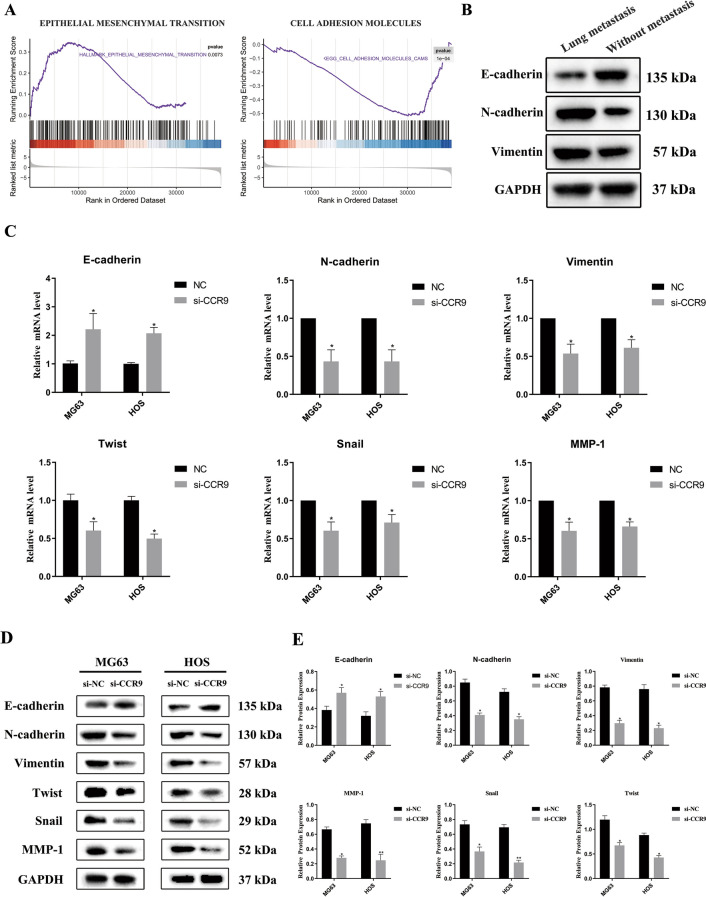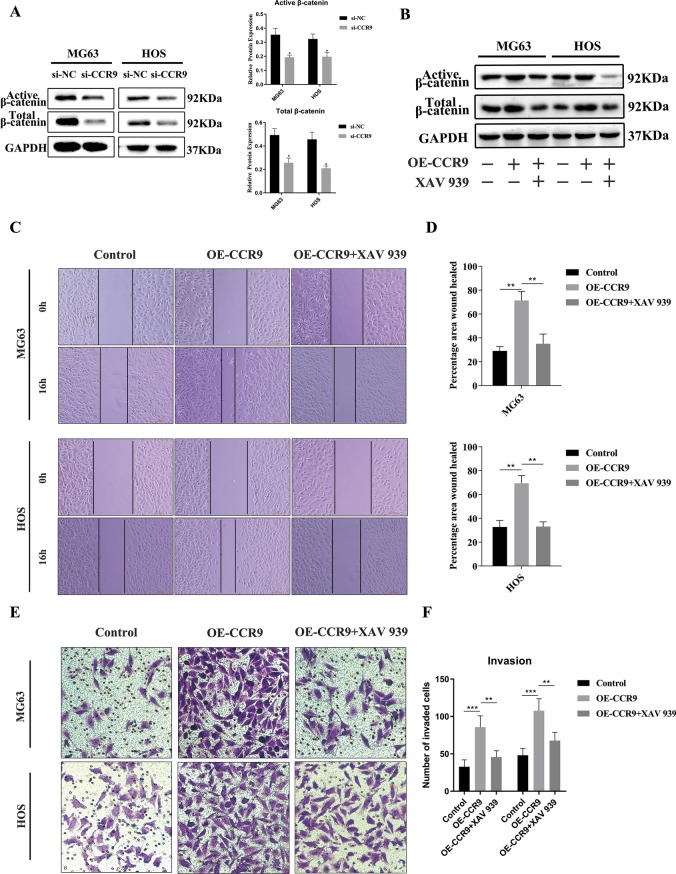Correction to: Cancer Cell International (2021) 21:648 https://doi.org/10.1186/s12935-021-02320-0
In this article [1], the annotation was wrong in Fig. 5B and in Fig. 6C, the figure of HOS cells treated by OE-CCR9 + XAV 939 at 0 h was wrong. The revised Figure 5 and its legend and Figure 6 are given below.
Fig. 5.
a The GSEA results showed significant enrichment of the gene signature associated with EMT and cell adhesion molecules. b The protein expression level of E-cadherin was lower in OS tissues with lung metastasis, and the expression of N-cadherin and Vimentin was upregulated. c The expression N-cadherin, vimentin, twist, snail and MMP-1, was obviously downregulated, and E-cadherin expression was significantly upregulated in si-CCR9 group. d The protein expression levels of EMT-related markers in MG63 and HOS cells. e Quantitative data for the protein expression levels of EMT-related markers. Mean ± SD from three independent experiments. *P < 0.05; **P < 0.01; ***P < 0.001
Fig. 6.
a The protein expression levels of active β-catenin and total β-catenin were downregulated in si-CCR9 group. b The protein expression levels and quantitative data of active β-catenin and total β-catenin in MG63 and HOS cells were shown. Overexpression of CCR9 activated the Wnt/β-catenin pathway, and the Wnt signaling inhibitor XAV-939 counteracted the activation. c Cell migration assay of MG63 and HOS cells. Overexpression of CCR9 increased the wound healing rate and the inhibitor of XAV-939 inhibited this effect. d Quantification of the area percentage of wound healing. e Transwell invasion assay of MG63 and HOS cells. Overexpression of CCR9 promoted the invasion ability and the inhibitor of XAV-939 inhibited this effect. f Quantitative results of the Transwell migration and invasion assays. Mean ± SD from three independent experiments. *P < 0.05; **P < 0.01; ***P < 0.001
Footnotes
Publisher's Note
Springer Nature remains neutral with regard to jurisdictional claims in published maps and institutional affiliations.
Haoran Kong, Wenhui Yu and Zhuning Chen have contributed equally to this work
Contributor Information
Keng Chen, Email: 47948842@qq.com.
Yanfeng Wu, Email: wuyf@mail.sysu.edu.cn.
Huiyong Shen, Email: shenhuiy@mail.sysu.edu.cn.
Reference
- 1.Kong H, Yu W, Chen Z, Li H, Ye G, Hong J, Xie Z, Chen K, Wu Y, Shen H. CCR9 initiates epithelial–mesenchymal transition by activating Wnt/β-catenin pathways to promote osteosarcoma metastasis. Cancer Cell Int. 2021;21:648. doi: 10.1186/s12935-021-02320-0. [DOI] [PMC free article] [PubMed] [Google Scholar]




